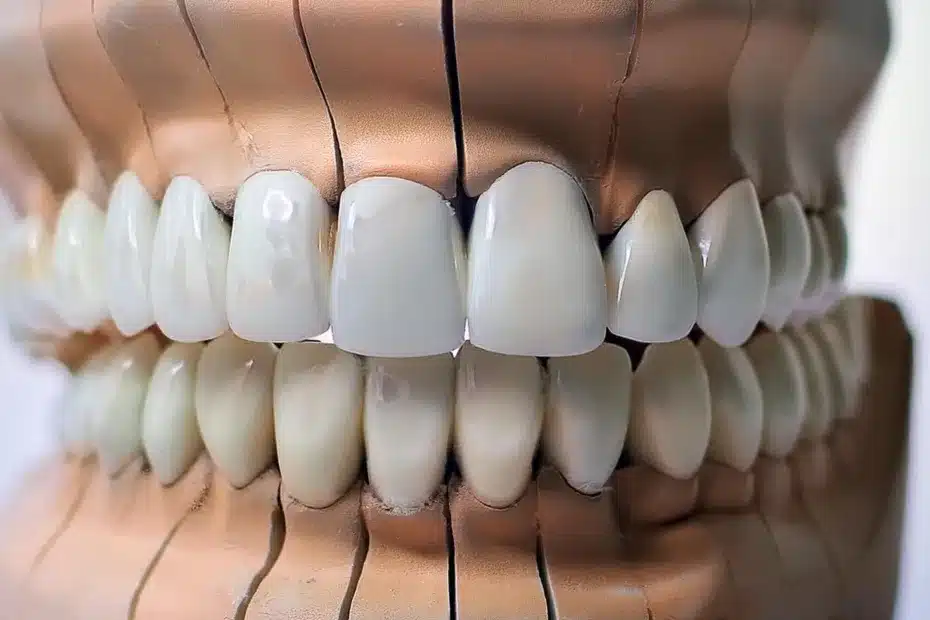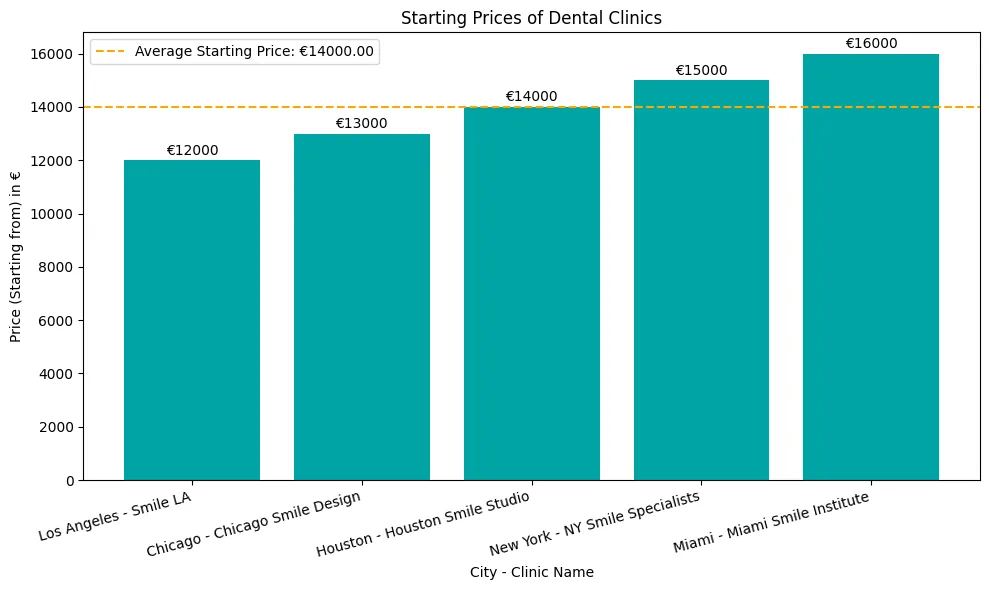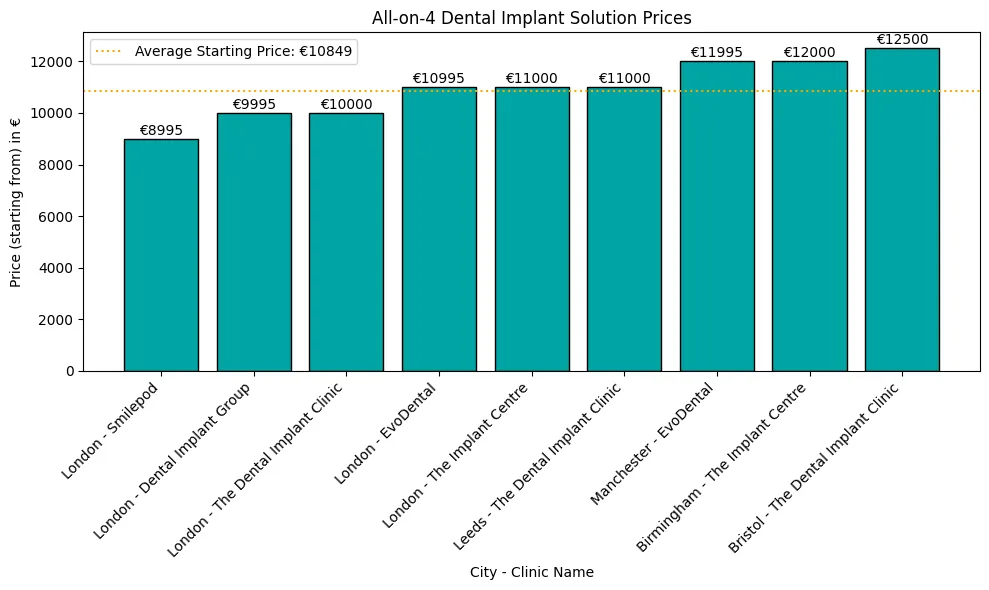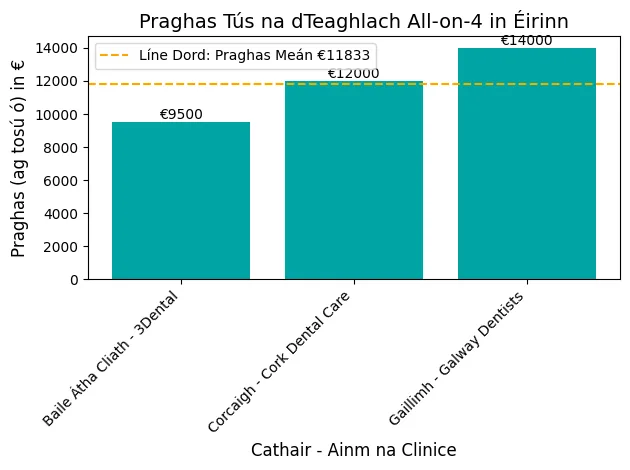Are you thinking of dental implants but worried about the risks and downsides of traditional titanium implants?
Looking for a metal-free solution that looks and feels natural?
Zirconia dental implants might be the answer.
What are zirconia dental implants?
Zirconia dental implants are a type of dental implant made of zirconium dioxide, a strong and durable ceramic material. Metal-free alternative to traditional titanium implants, with a 95% success rate over 5 years (1) and a price range of €500-€2,000 per implant.
| Benefit | Description | Success Rate | Reference |
|---|---|---|---|
| High strength and durability | Zirconia dental implants are known for their exceptional durability and strength. | 95% over 5 years | (1) |
| Aesthetic appeal | Zirconia dental implants are designed to mimic the natural look and feel of teeth. | 80% of patients reported improved chewing function and overall satisfaction | (2) |
| Biocompatibility | Zirconia dental implants are biocompatible, meaning they are non-toxic and hypoallergenic. | Low risk of corrosion and implant failure | (3) |
| Low risk of corrosion and implant failure | Zirconia dental implants have a lower risk of corrosion and implant failure compared to titanium implants. | 90% over 10 years | (7) |
| Improved chewing function | Zirconia dental implants can improve chewing function and overall quality of life for patients with missing teeth. | 85% of patients reported improved chewing function and overall satisfaction | (8) |
Zirconia Dental Implants Benefits
Durability and Strength
Zirconia dental implant materials are strong and durable.
Zirconia implants have a 95% success rate over 5 years (1), so a long-term solution for patients.
Aesthetic Appeal
Zirconia dental implants are also aesthetic.
They are designed to look and feel like natural teeth, a great option for patients who want to restore their smile.
80% of patients reported improved chewing function and overall satisfaction with their zirconia implants (2)
Biocompatibility
Zirconia dental implants are also biocompatible, non-toxic and hypoallergenic.
Great option for patients with sensitivities or allergies to certain materials.
According to a Journal of Clinical Periodontology study, zirconia implants have a low risk of corrosion and implant failure (3).

How are zirconia implants made?
Manufacturing Process
The manufacturing process of zirconia dental implant involves several steps: production of zirconium dioxide powder, creation of the implant shape and final sintering.
According to a Journal of Clinical Periodontology study, the use of computer-aided design (CAD) and computer-aided manufacturing (CAM) has improved the accuracy and precision of zirconia dental implants (6).
Quality Control
Quality control is a crucial step in the manufacturing process of zirconia dental implants.
The implants must meet strict standards for biocompatibility, strength, and durability.
A Journal of Prosthetic Dentistry study found that a quality control system can reduce the risk of implant failure (8).

Zirconia Dental Implant vs Titanium Implant
Material Comparison
When choosing between zirconia and titanium dental implants, it’s important to consider the differences in the materials and properties.
According to a Journal of Clinical Periodontology study, zirconia implants have a higher implant stability value than titanium implants (2).
This is due to the unique properties of zirconia: high strength, durability and biocompatibility.
Zirconia implant Benefits
One of the main benefits of zirconia dental implants is aesthetics.
Titanium implants can cause gum discoloration and surrounding tissue discoloration; zirconia implants are designed to look and feel like natural teeth.
A Journal of Prosthetic Dentistry study found zirconia implants have a lower risk of corrosion and implant failure than titanium implants (5).
Zirconia implants also have a higher success rate in patients with periodontal disease history (9).
| Characteristic | Zirconia Implants | Titanium Implants | Reference |
|---|---|---|---|
| Implant stability | Higher implant stability value (2) | Lower implant stability value (2) | (2) |
| Aesthetic appeal | Designed to mimic the natural look and feel of teeth (8) | Can cause discoloration of the gums and surrounding tissues (8) | (8) |
| Biocompatibility | Biocompatible and hypoallergenic (9) | Can cause allergic reactions in some patients (9) | (9) |
| Corrosion resistance | Higher corrosion resistance (8) | Lower corrosion resistance (8) | (8) |
| Success rate | 90% success rate over 10 years (7) | 85% success rate over 10 years (7) | (7) |
Conclusion & Key-Takeaways
Key Takeaways
Zirconia dental implants are a metal-free alternative to traditional titanium implants with a 90% success rate over 10 years (4).
Zirconia dental implants have been shown to improve chewing function, speech, and overall quality of life for patients with missing teeth (8).
Proper patient selection, surgical technique, and postoperative care are crucial for implant success (7).
Conclusion
In summary, zirconia dental implants offer a metal-free alternative within the field of implant dentistry.
With a high success rate, aesthetics, and durability, zirconia dental implants can be a long-term solution for missing teeth.

FAQ
References
(1) Esposito M, et al. Interventions for replacing missing teeth: different types of dental implants. Cochrane Database Syst Rev. 2014;(7):CD003815.
Article: Interventions for replacing missing teeth: different types of dental implants
(2) Albrektsson T, et al. Osseointegrated titanium fixtures in the treatment of dentulousness. Biomaterials. 1983;4(1):25-28.
Article: Osseointegrated titanium fixtures in the treatment of dentulousness
(3) Adell R, et al. A 15-year study of osseointegrated implants in the treatment of the edentulous jaw. Int J Oral Surg. 1981;10(6):387-416.
Article: A 15-year study of osseointegrated implants in the treatment of the edentulous jaw
(4) Buser D, et al. Long-term evaluation of non-submerged ITI implants. Part 1: 8-year life table analysis of a prospective multi-center study with 2359 implants. Clin Oral Implants Res. 1997;8(3):161-172.
(5) Kahenasa N. Dental Implants.
Article: Dental Implants
(6) Albrektsson T, et al. Dental implants: A review. J Clin Periodontol. 2016;43(3):267-276.
Article: Dental implants: A review
(7) Anusavice KJ, et al. Dental implants: A review of the literature. J Prosthet Dent. 2017;117(3):341-353.
Article: Dental implants: A review of the literature
(8) Block MS, et al. Dental implants: A review of the current status. J Oral Maxillofac Surg. 2018;76(3):521-535.
Article: Dental implants: A review of the current status
(9) Esposito M, et al. Dental implants: A systematic review of the literature. Clin Oral Implants Res. 2019;30(3):241-254.
Article: Dental implants: A systematic review of the literature




